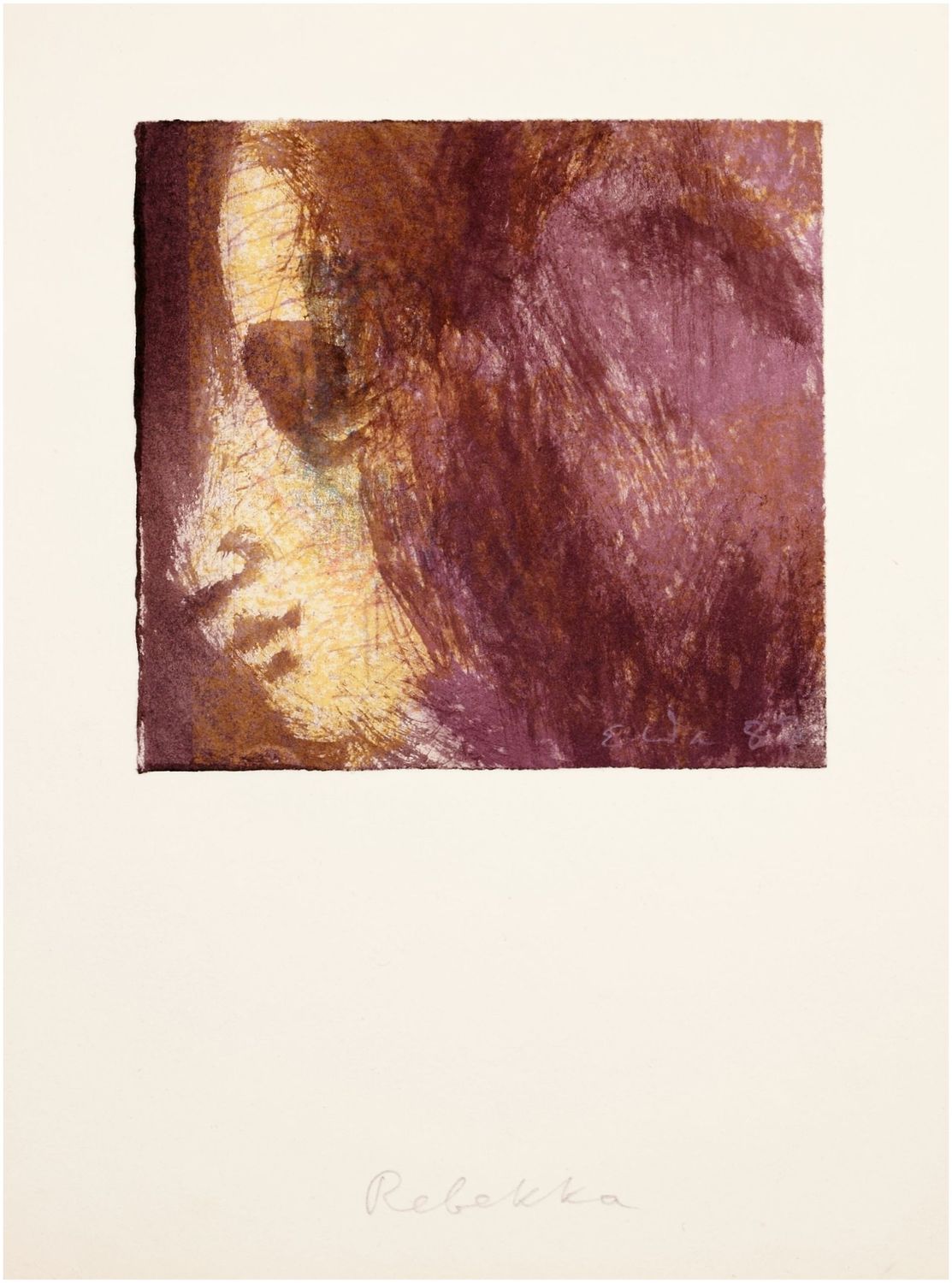Wachter, Emil (1921-2012), Rebekka, 1987
Emil Wachter(1921 Neuburgweiser - 2012 Karlsruhe), Rebekka , 1987. Watercolor mounted on cardboard, 13.5 (height) x 14 cm (width). Signed “E.[mil] Wa[chter]” in pencil within the image, dated “[19]87” and inscribed “Rebekka” on the backing card. Handwritten letter signed on the verso by the artist dated “July 15, [19]88” to Robert (?) Spaemann, in which he wishes the theologian “more and more the eternal already in time” and muses: “The tear-off calendar is getting thinner and thinner, the impact of the discarded years higher and higher - even I am already experiencing this.”
- Watercolor in excellent condition, backing board somewhat darkened and with slight creases. Traces of mounting in the margins on the reverse.
- Rebekka's Appearance -
Emil Wachter repeatedly dealt with the mothers of the Israelites in his work. He was especially interested in Rebekka, the wife of Isaac, who gave birth to the twins Esau and Jacob.
We see a dark black and purple room from which Rebekah's yellow profile shines out, her hair, lips and nose, but especially her eyes, are also deep black. In this way, she does not stand out from the dark background, but is bound to it. And from the face it is clear that yellow is shimmering out of the darkness everywhere on the abstract right side of the picture. Rebekah seems to mysteriously materialize out of the darkness. This impression is reinforced by the fact that the Jewish ancestor fills the picture space and breaks through to the top.
The watercolor is an impressive example of Wachter's sensitive revival of the sacred image. Fittingly, it adorns the letter to the theologian Robert Spaemann on the reverse.
"A good figurative painting has all the qualities of the abstract.
Emil Wachter
About the artist
Emil Wachter began studying theology and philosophy in Freiburg in 1941, but was drafted into the army in 1942 and taken prisoner by the British, so he could only resume his studies in 1946 and complete them in 1948. In the same year, he made a trip to Paris, which led to his decision to devote himself to art. From 1949 to 1952 Wachter studied at the art academies in Munich and Karlsruhe under Karl Hubbuch, Carl Trummer and Erich Heckel. He then worked as a freelance painter and sculptor and taught at the Kunstakademie Karlsruhe from 1958 to 1963. He was appointed professor in 1983.
Wachter devoted himself especially to the revival of sacred art. He created numerous stained glass windows, reliefs, mosaics, altars, and bells for sacred buildings. He also produced an immense body of secular art that also has a mystical and mysterious quality.
His work has been shown in over 150 international solo exhibitions.
Emil Wachter was honored with numerous awards throughout his artistic life. His first major award was the Art Prize of the City of Karlsruhe in 1956, and he received his highest honor in 2011 when he was awarded the Federal Cross of Merit.

